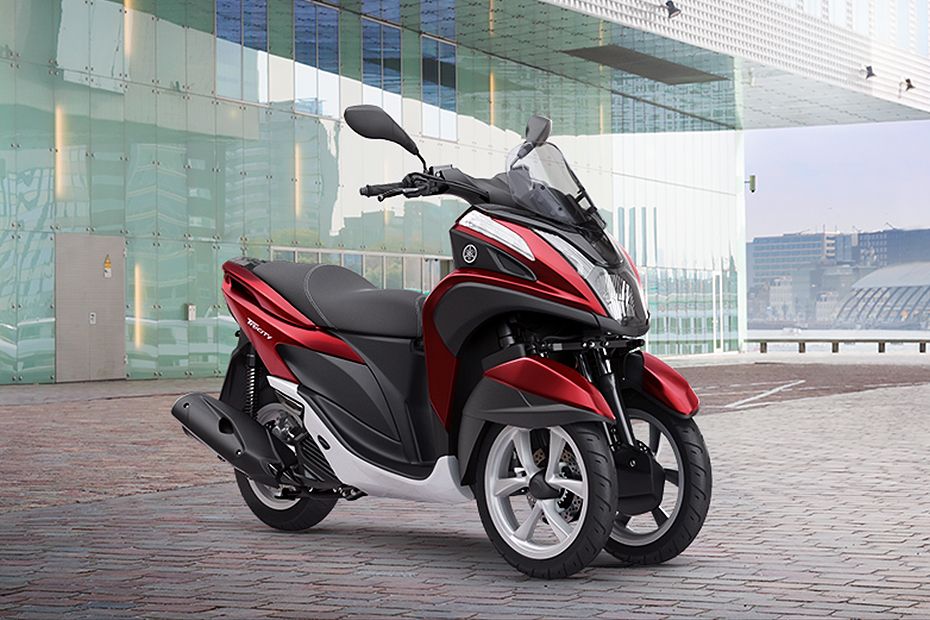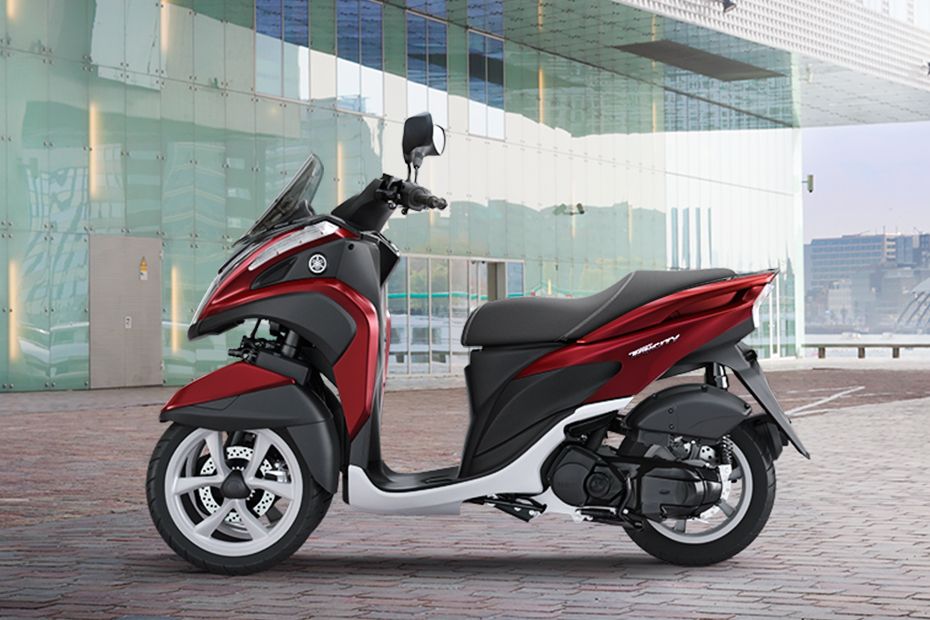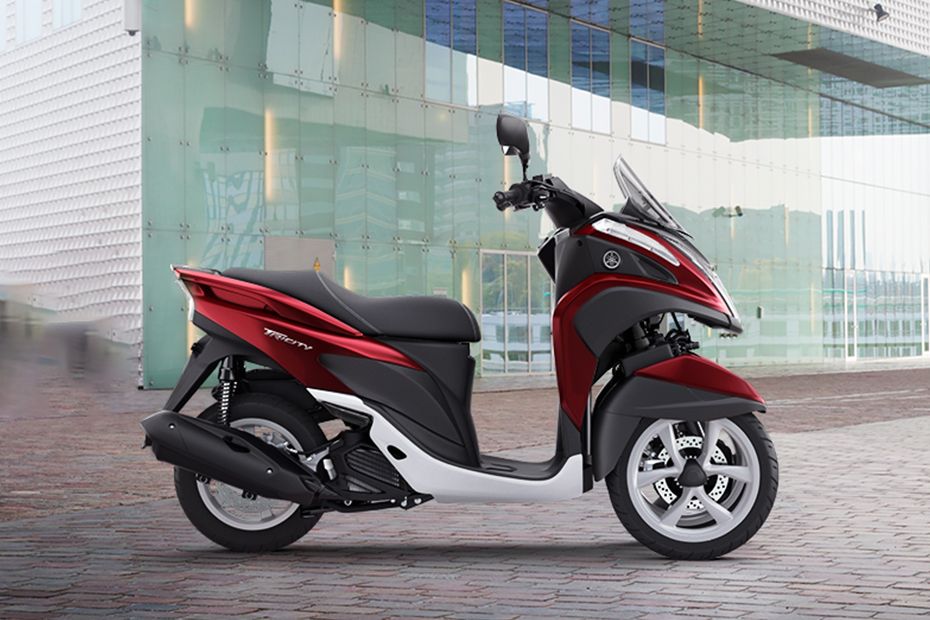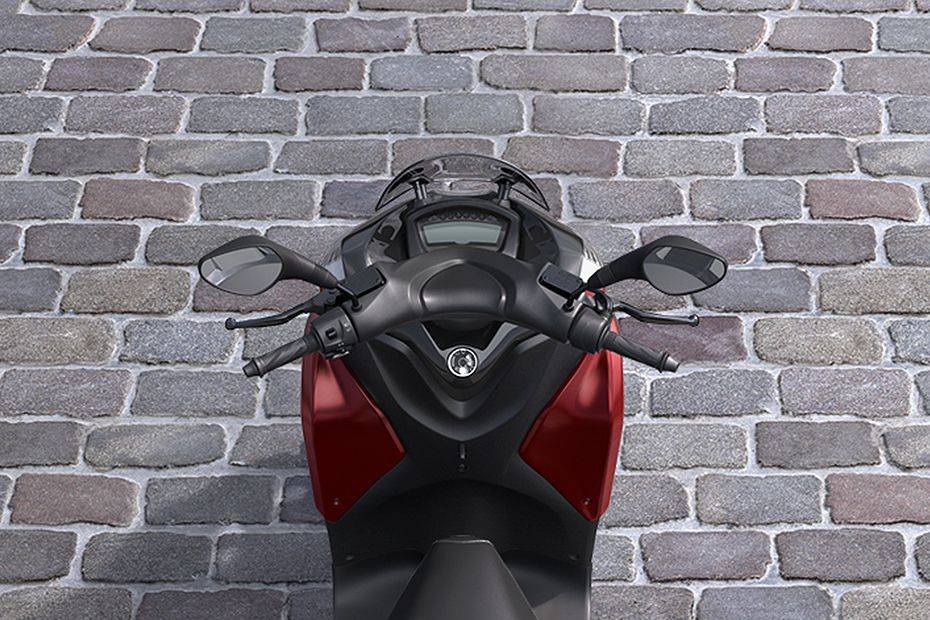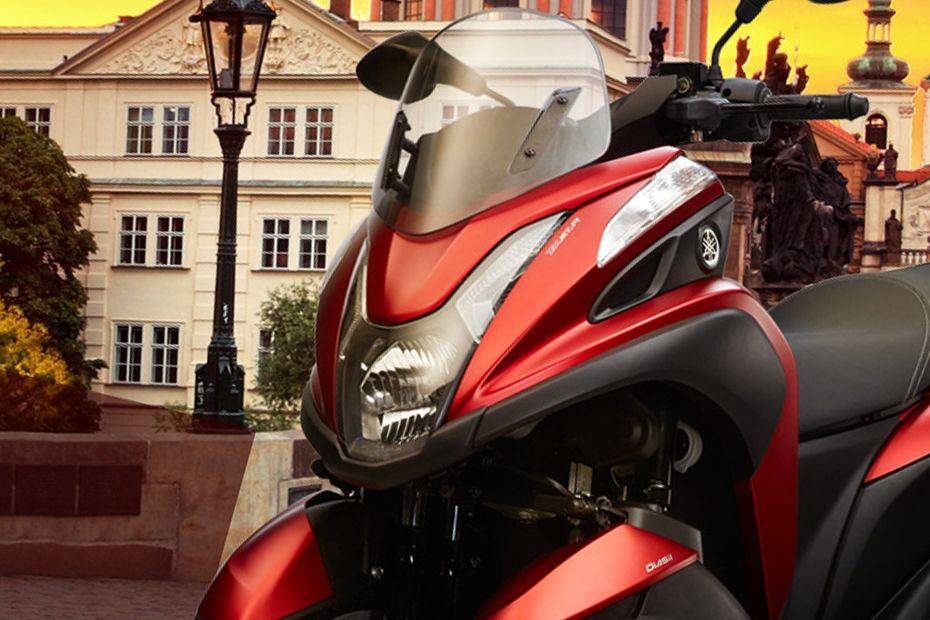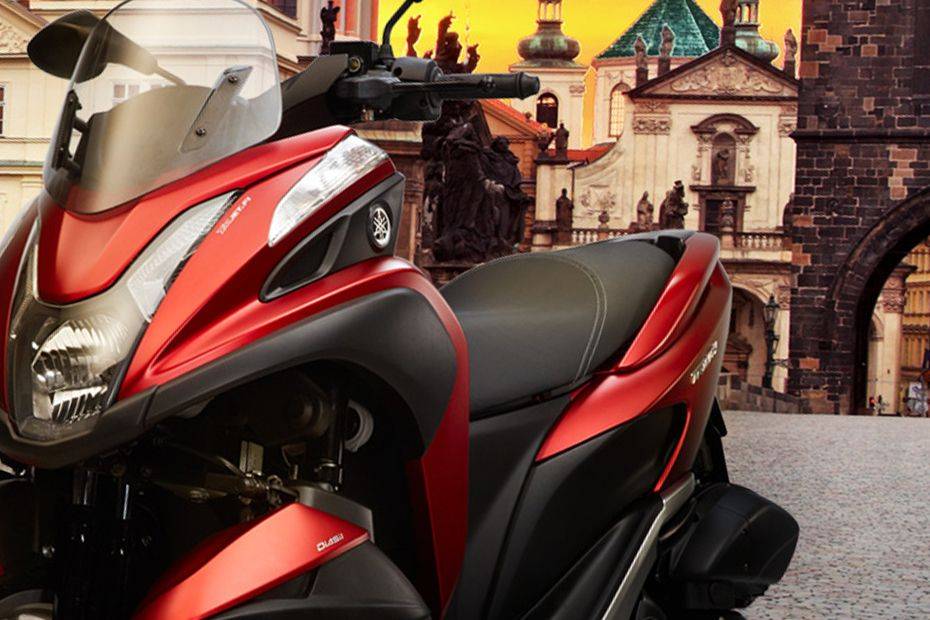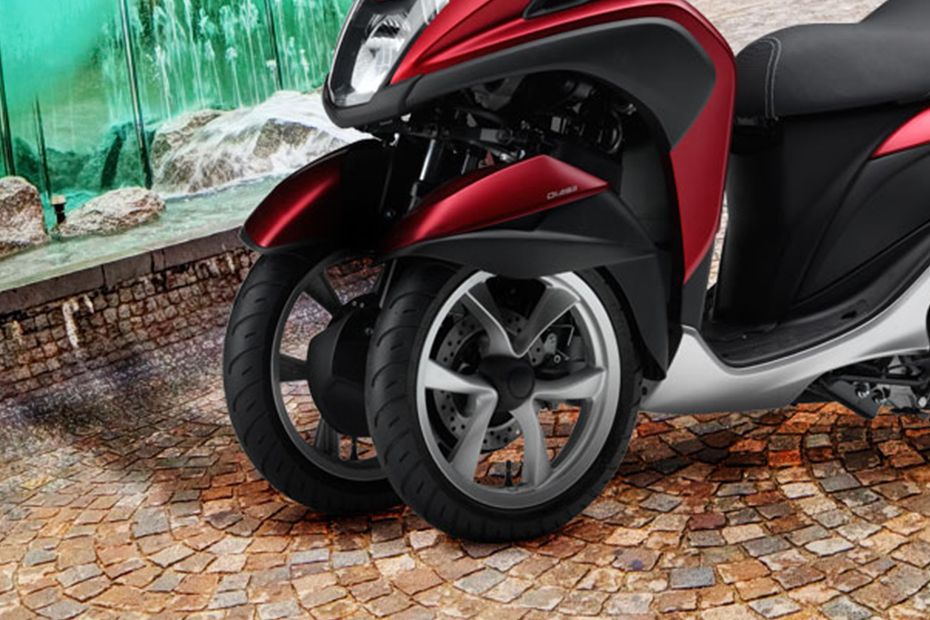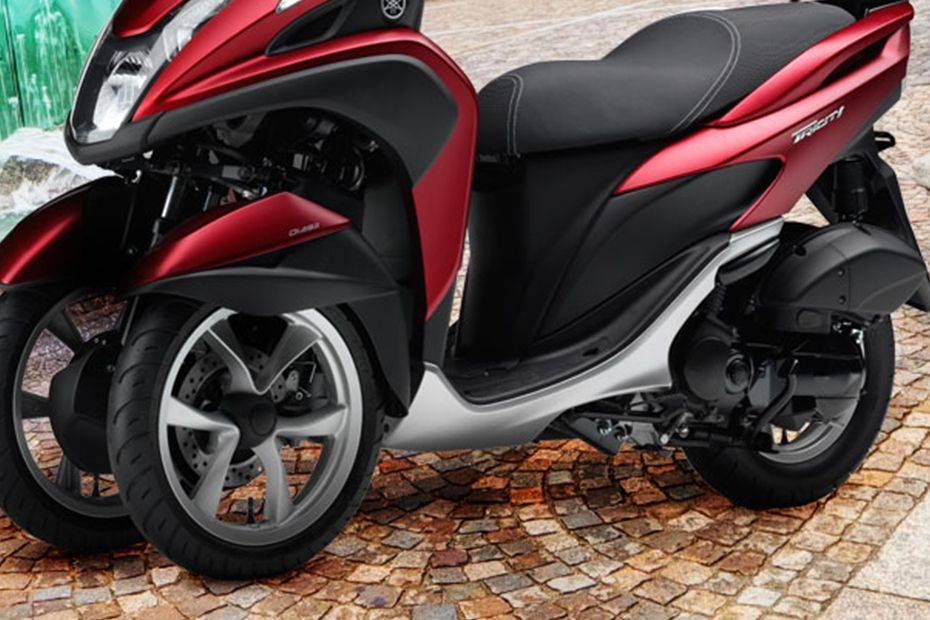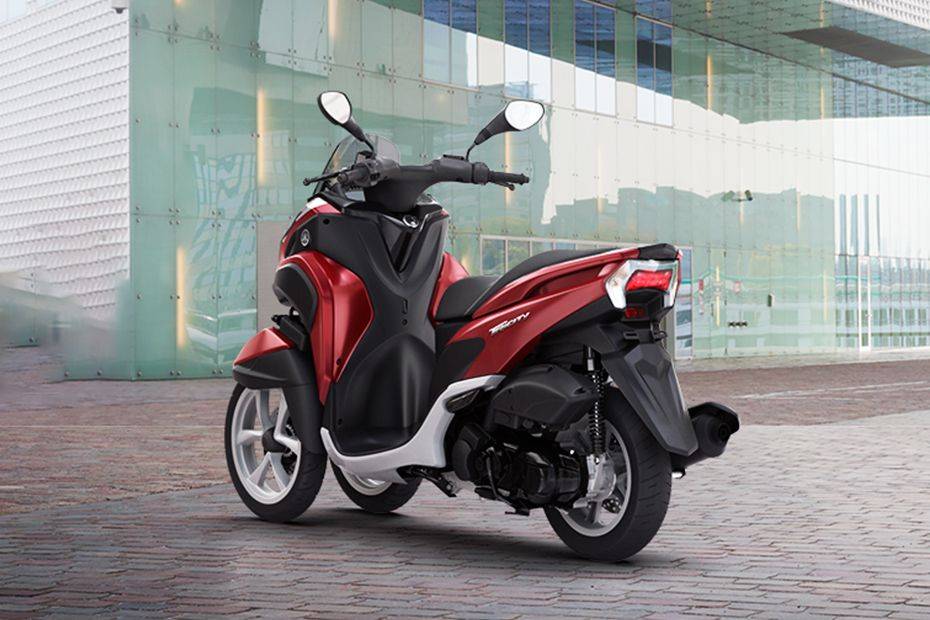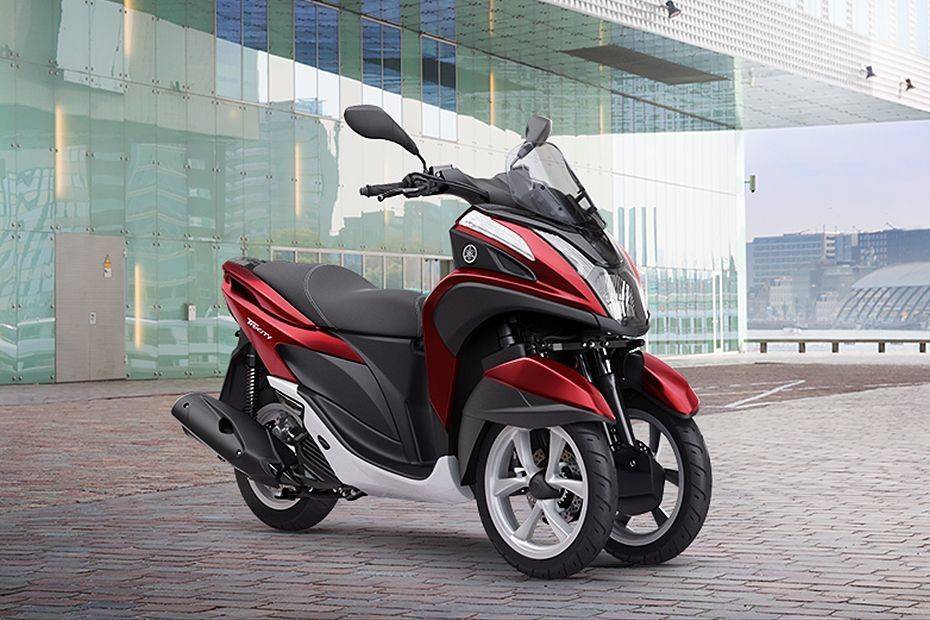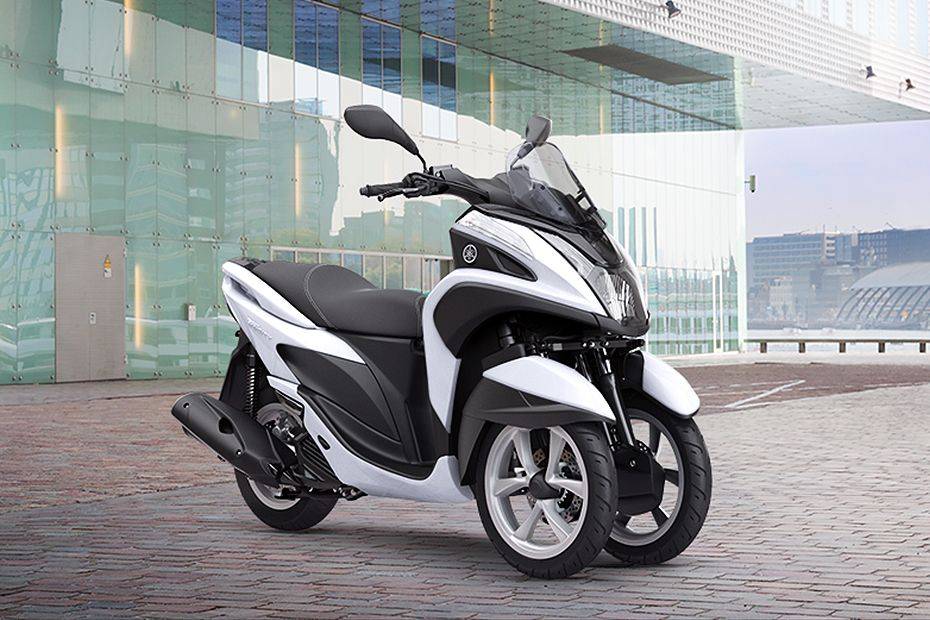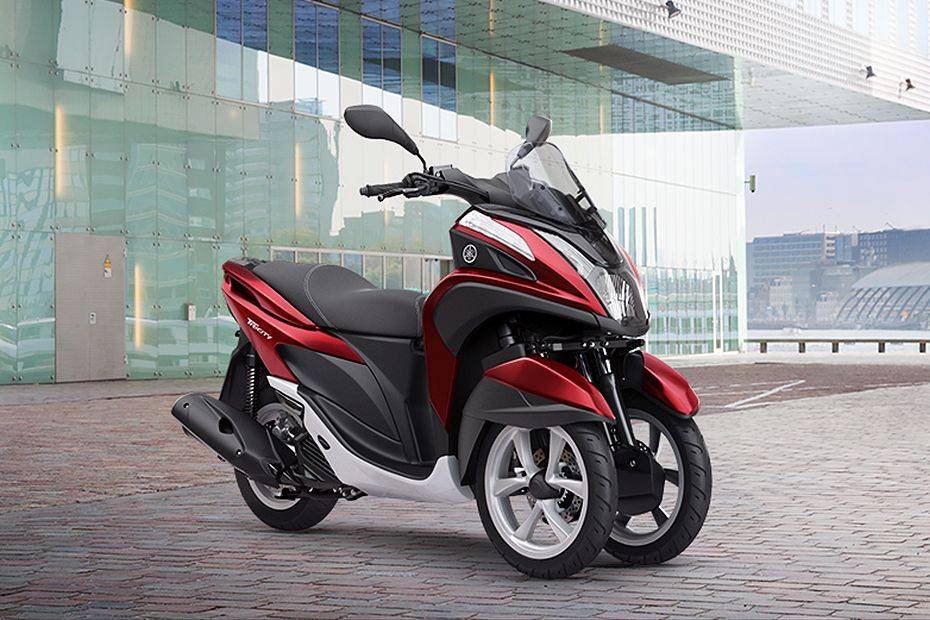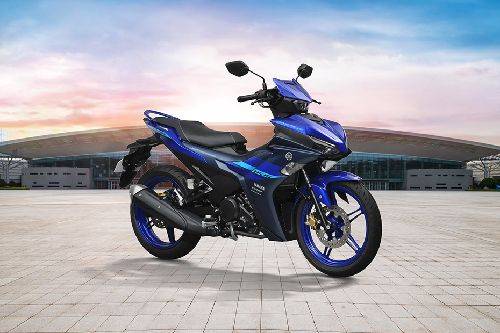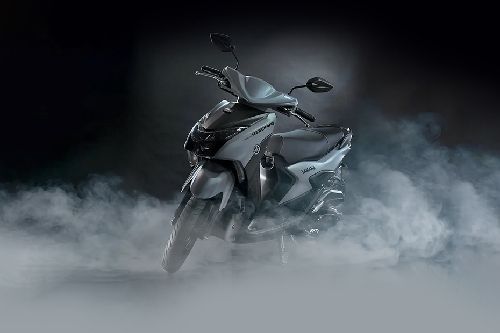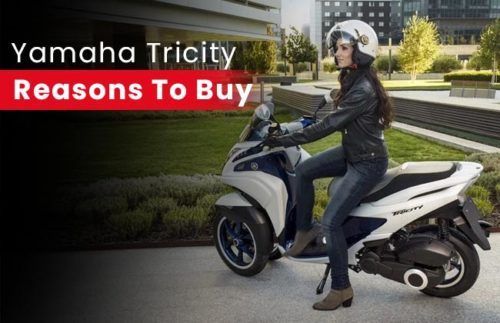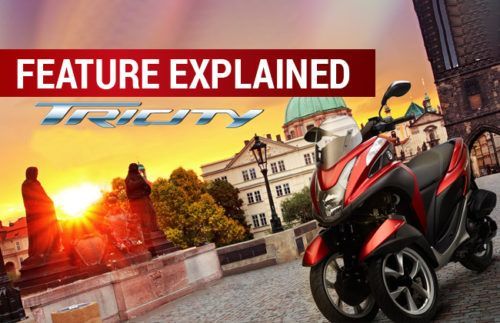Tricity Pros & Cons
Key advantages and drawbacks at a glanceRide quality
Impressive erformance
Styling not to everyone’s taste
Slightly pricey
Recent Updates of Yamaha Tricity
There is nothing else as unique on the road and there won’t be one for a long time. But the appeal of this odd little nugget goes beyond the two wheels front and one wheel rear layout. While it does give you the mobility of a motorcycle without sacrificing the stability with just two wheels, it is also packed with advanced features that make it a very comfortable commuter. The unique cantilevered suspension makes it comfortable while the parallelogram linkage makes it agile like a motorcycle. The bike is powered by a 125 cc liquid-cooled and fuel-injected engine that produces 11 PS and 10.4 Nm of torque. Advanced features like the LED position lights, 20 L storage capacity, LCD display and the answerback key adds to its futuristic appeal. A slightly different take on the maxi scooter formula that is bound to get you noticed
Gallery of Tricity
- exterior
- color
Yamaha Tricity Exterior Images
Exterior ImagesExplore 11 Exterior images of the Yamaha Tricity and Get a Closer Look
Yamaha Tricity Videos
Watch latest video reviews of Yamaha Tricity to know about its performance, mileage, styling and more.
Yamaha Tricity Review 2026
A couple of years ago, Yamaha surprised everyone in the fraternity of the two-wheeler automobiles. How? By launching its own version of “trike” – a three-wheeled vehicle with a setup of two wheels at the front and one at the rear. Launched as a unique and niche product, the Yamaha Tricity, as what it is called, is not meant for everyone or for your daily commutes. Since its launch, the Yamaha Tricity has been marketed as a premium product for those who wish to stand out and value technological aspects more than the visual ones. In the Philippines, the Yamaha Tricity is priced at Php 146,000 and is being offered in two color options – Red and White.
Yamaha Tricity Design
In a sea of conventionally designed motorcycles and scooters, the Yamaha Tricity comes out as a fresh wave. The three-wheeled scooter looks very distinctive with its unique front styling, with the overall design being sharp enough to gauge immense public response.
At the front, the Yamaha Tricity has got two wheels with individual dual tone front fenders over them. The front apron has a pointy front beak and comes fitted with a long V-shaped headlamp setup with daytime running lamps on its upper corners. The turn indicators are mounted on the topmost corners of the front apron, with the centre getting a tall and transparent front windscreen. The side portions of the front apron get black contrasting plastic panels towards the upper and lowermost parts.
The Tricity continues its bulky appeal on the side profile as well, with the sloping side panels ending up in a small but wide rear tail. Both the floorboard as well as large single piece seat has a design which looks slanting towards the front. The seat is very large and spacious enough to seat two full-sized adults with ease. The Tricity also gets large split grab rails on either side of the pillion seat, giving it a distinctive look. At the rear, the Yamaha Tricity looks a bit smaller and slimmer with an LED tail lamp and sabre-tooth shaped turn indicators on either side. The six-spoke silver finished alloy wheels look great too.
The rider’s cockpit has been amazingly designed, with the Yamaha Tricity getting a large hexagonal fully digital instrument console accompanied by an array of telltale lights sitting above the digital screen. The handlebar looks wide and large with the rear view mirrors mounted on it. The build quality, as seen on all other Yamaha products, is unquestionable.
Tricity Ride & Handling
When it comes to the suspension setup, the Yamaha Tricity has got a very unique chassis setup. The frame has been designed with a 50:50 weight distribution both at the front and rear, which makes riding the Tricity a breeze, despite the bulky fore end.
Sitting on an underbone frame, the Yamaha Tricity has got tandem-type cantilever hydraulic dual forks at the front and a unit swing coil spring suspension at the rear. Talking about the front suspension first, the dual fork setup has got a parallelogram link which allows parallel leaning of the two front wheels and individualistic functioning of both the front forks. This overall setup helps the Tricity in gaining additional stability over all sections by getting the same traction and range in whatever the direction of motion is. Also, the longer stroke length achieved by this suspension setup aids in better absorption over broken patches, without making the ride quality harsh.
Despite being an intimidating scooter in terms of size, the low seat height of 780 mm makes the Tricity a friendly vehicle even for riders with shorter heights. However, the low ground clearance of 120 mm makes the Tricity prone to scraping on high-speed breakers.
Yamaha Tricity Engine & Fuel Consumption
The Yamaha Tricity sources its power from a four stroke, liquid cooled, 2-valve, fuel injected, 124.8 cc engine. This mill belts out a maximum power output of 11 PS and a peak torque output of 10.4 Nm. The engine is mated to a CVT transmission. When it comes to sheer refinement, this 125cc mill impresses to the core, with a certain essence of urgency in its pull from absolute rest. The engine feels powerful and torquey across the rev range, with the fueling being top notch with almost negligible jerks while throttling.
Tricity Braking & Safety
The Yamaha Tricity comes equipped with disc brake setup on all the three wheels, which work in unison, courtesy the Unified Braking System. According to this system, when the rear brake lever is applied, all the three brakes get activated with separated brake forces for better stopping power. However, that’s not the case when the front brake is applied – in that case, the brake force is transmitted only to the front wheels.
Being a premium product, the Yamaha Tricity was expected to gain some premium electronic safety aids, including the ABS. Sadly, apart from the Unified Braking System, the Yamaha Tricity is not equipped with any other safety features. However, the disc brake setup on all the wheels is a nice touch.
Yamaha Tricity Verdict
For those who wish to have a technologically stepped up product and has a sense of individualism, the Yamaha Tricity is one great product to get your hands on. With proven mechanicals, there is hardly any fault when it comes to performance and ride quality. The new-age suspension and braking system work flawlessly, thus making the dual wheel front set up not a huge and complicated task to ride and handle. Also, the way it looks makes the Tricity seem like a product from the future. However, we do wish that the Tricity could have powered with a bigger and more powerful engine as well as a couple of more modern electronic aids to justify its premium appeal even more.
Yamaha Tricity Owner Reviews
Write a Review- All (5)
- Feature (2)
- Spec (1)
- Exterior (2)
- Dimension (1)
- Seats (1)
- Engine (1)
- Tire (1)
Yamaha Tricity Questions & Answers (FAQs)
Get answers to frequently asked questions (FAQs) about the Yamaha Tricity, including its features, specifications, performance, maintenance, and more.
How much is Yamaha Tricity in Philippines?
The Yamaha Tricity price in the Philippines starts at for the base variant.
Helpful (1704)Latest Question
Q. What is the Yamaha Tricity Ground Clearance?
Q. What is the Yamaha Tricity seat height?
Q. What is the Yamaha Tricity top speed?
Q. What is the Yamaha Tricity fuel tank capacity?
Q. Where near Dumaguete can I buy a Tricity. Dealer there said no longer available. True? I have a disability issue and need one. Thanks!
Yamaha Featured Motorcycles
Nearest Yamaha Dealers
Yamaha Tricity News and Reviews
- Tricity News
